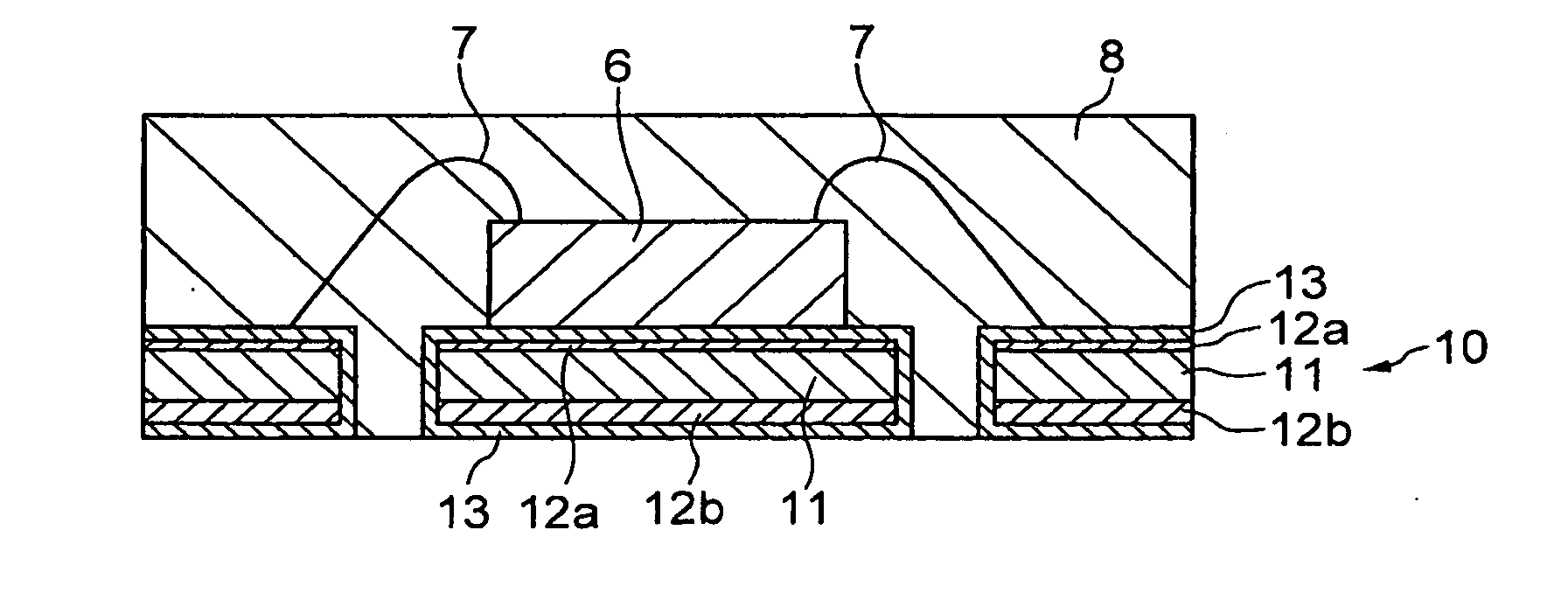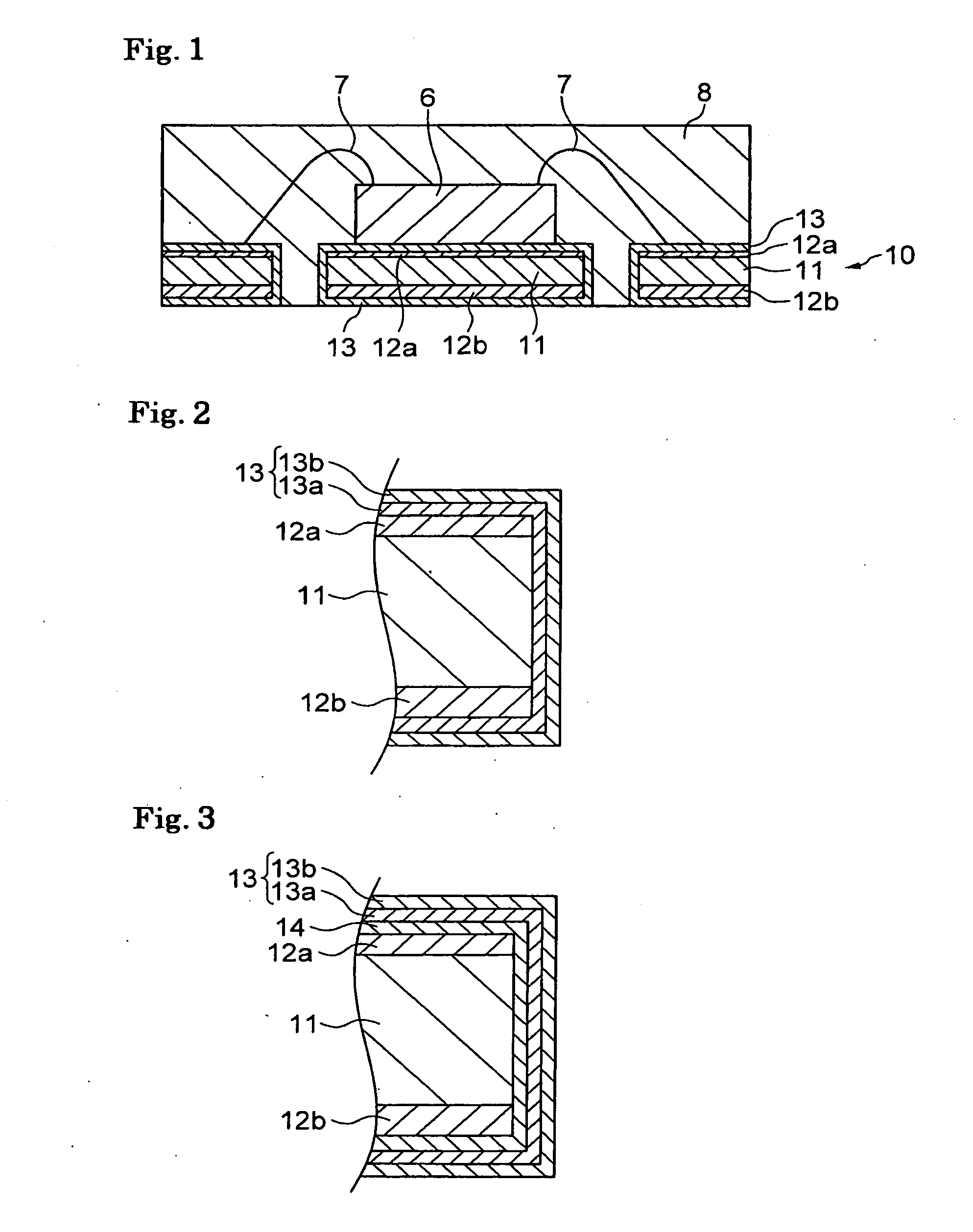Lead frame and method of manufacturing the same
a lead frame and manufacturing method technology, applied in the field of lead frame, can solve the problems of warping, detachment from the resin, use of two kinds of plating solution, etc., and achieve the effect of improving the adhesion to the resin and not reducing the productivity
- Summary
- Abstract
- Description
- Claims
- Application Information
AI Technical Summary
Benefits of technology
Problems solved by technology
Method used
Image
Examples
first example
[0048]A metallic base material of copper sheet 0.2 mm thick and 180 mm wide was pretreated for plating. Thereafter, an Ni layer having a thickness ranging from 3.3 to 4.1 μm was formed on front and back surfaces of the metallic base material using a sulphamic acid Ni plating bath.
[0049]Next, one side (front surface side) of the metallic base material having the Ni layer was sprayed with an etching solution (ferric chloride solution) for approximately 10 seconds to reduce the thickness of the Ni layer on this side by 0.8-1.0 μm. In this manner, a thin section having a thickness ranging from 2.3 to 3.2 μm was formed.
[0050]Although no protective film using a resist was provided on the reverse side (back side) of the metallic base material, no substantial problem was observed. In other words, an absence of protective film caused no substantial problem with regard to the spreading and adhesion of the etching solution to the Ni layer on the reverse side of the metallic base material, prov...
second example
[0057]In a manner similar to that in the first example, an Ni layer having a thickness ranging from 3.0 to 3.5 μm was formed on the front and back surfaces of the metallic base material using a sulphamic acid Ni plating bath. Next, a mask was formed on the side for mounting of a semiconductor device using a resist to protect a region for placing the semiconductor device and a region for providing wire bonding. A region of the Ni layer exposed from the mask was sprayed with an etching solution for approximately 10 seconds to reduce the thickness of the exposed region by approximately 1.0 μm. The mask was then removed.
[0058]Thereafter, the steps similar to those in the first example were performed to complete fabrication of a lead frame. The characteristic of this lead frame was that the Ni layer had a thick section in the region for placing a semiconductor device (die-pad site) and the region for providing a wire bonding (wire-bonding site), and that the Ni layer had a thin section i...
PUM
 Login to View More
Login to View More Abstract
Description
Claims
Application Information
 Login to View More
Login to View More - R&D
- Intellectual Property
- Life Sciences
- Materials
- Tech Scout
- Unparalleled Data Quality
- Higher Quality Content
- 60% Fewer Hallucinations
Browse by: Latest US Patents, China's latest patents, Technical Efficacy Thesaurus, Application Domain, Technology Topic, Popular Technical Reports.
© 2025 PatSnap. All rights reserved.Legal|Privacy policy|Modern Slavery Act Transparency Statement|Sitemap|About US| Contact US: help@patsnap.com



